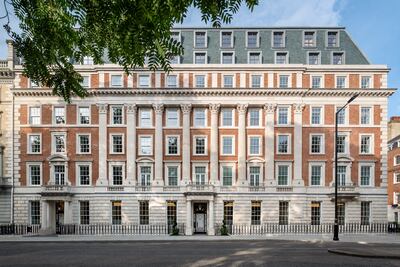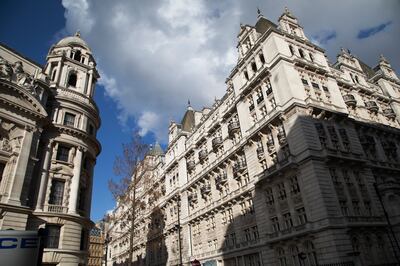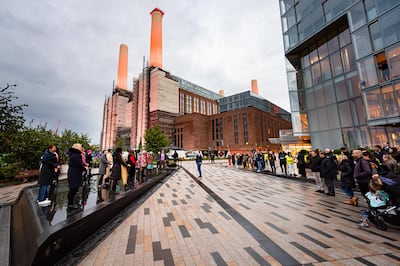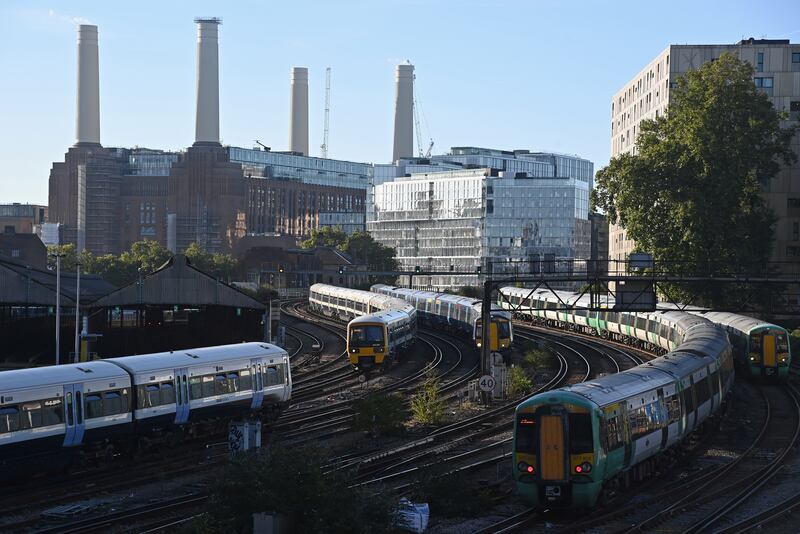Property market professionals are predicting central London faces a supply squeeze on new-build luxury homes as rising taxes, complex planning regulations and a shortage of land deters developer investments.
While sales of luxury residential properties have soared in recent months as Covid restrictions ease and overseas buyers, including from the GCC, return to the market, demand is already outstripping the supply of homes with predictions the situation will cause prices to surge.
A shortage of plots to develop and the prospect of corporation tax rising from 19 per cent to 25 per cent in April 2023 is also alarming developers, who will also be hit by the residential property developer tax.
Known as the “cladding tax”, the levy aims to raise £2 billion (($2.76 billion) to cover the cost of government grants to pay for cladding remediation work on developments across the UK.
“There’s a shortage of actual opportunities [for developers] and the opportunities around come with huge complications surrounded by planning and unknown future tax structures on developers,” said Charlie Walsh, head of residential sales and marketing at Central London’s OWO Residences by Raffles. Mr Walsh was talking to The National on the sidelines of a National Bank of Kuwait sponsored seminar on London property hosted by the Arab Bankers Association at the Arab-British Chamber of Commerce headquarters in Mayfair.
Demand for luxury homes on the rise but supply is weak
London’s luxury residential market has recorded more sales in the first nine months of 2021 than any full year since 2015, as international buyers return to the market, property consultancy Savills said.
In total, 352 £5million-plus transactions were recorded in the first three quarters of the year, compared with 348 in the whole of 2020 and only 310 in 2019.
As a result, prime London houses with six or more bedrooms have risen 6.2 per cent on average in the past year, with values of five-bedroom properties up 5.3 per cent, according to Savills.
Despite rising demand, a lack of supply in the UK’s residential market is already hampering the market, according to Liam Bailey, global head of research at Knight Frank.
“Supply in London, is not the level it should be,” Mr Bailey said, with the weak supply helping to support prices at the current levels.
“The problem is that as supply dries up, it becomes a kind of self-reinforcing issue,” he said, as those looking to sell and then upgrade have little to choose from.
The supply chain crisis is exacerbating the issue, with current shortages “weighing on the pipeline across the board” Mr Bailey said.
"A couple of developers were going to start residential developments next year and now they’ve pushed those plans back, so the supply stock in London is going to be squeezed more," he said.
“There’s a healthy pipeline of a prime stock coming forward, with existing developments being delivered and completions happening ... but in two or three or four years' time that supply in central London of new-build prime stock is going to dwindle quite quickly.”
Rising taxes are a challenge for developers
Andrew Sneddon, partner and head of tax and private wealth at international law firm Trowers & Hamlins, said the cladding tax, which is scheduled to go live next April and last for 10 years, will be a challenge for the market.
Mr Sneddon said the government is yet to outline what the tax rate will be or how it can be calculated. The levy is expected to raise enough capital over the next decade to pay for the removal of flammable cladding from high-rise buildings.
“Effectively, it's like a surcharge on corporation tax,” he said. It will deter developers, he said, because it will come as a double hit with the rise in corporation tax.
Chancellor of the Exchequer Rishi Sunak is expected to deliver the finer details on the tax and how it will be applied at this month’s Spending Review, with draft legislation for the new levy published in September.
“We should get confirmation at the budget next week,” Mr Sneddon said. “But the whole point is, we're talking about introducing a new tax in April next year, and we still don't know how much we're talking about. So it's very unhelpful and uncertain and people don’t like that.”
Finding new sites to develop also an issue
Mr Walsh, whose company is redeveloping the Old War Office building, a London landmark that once housed Winston Churchill’s headquarters during the Second World War, said finding further sites to develop will be an issue for developers.
A number of overseas developers have snapped up legacy assets in recent years, converting older buildings into luxury prime central property, which often attracts international buyers from the GCC.
Examples include Northacre’s The Broadway, located on the site of the former New Scotland Yard Metropolitan Police Headquarters, which the UK-based company, a subsidiary of Dubai investment banking company Shuaa Capital bought from the Mayor’s Office for Policing and Crime in 2014.

Meanwhile, Lodha UK, a subsidiary of India’s Lodha Group, has redeveloped No.1 Grosvenor Square, the former Canadian High Commission and US embassy, with notable ambassador Joseph P Kennedy, the father of JFK himself, a former resident.
Another legacy project dominating the skyline south of the river is the redevelopment of Battersea Power Station, which is being transformed from a working power station into luxury homes.
“Finding further sites to develop” and actually constructing and building decent prime property against a background of rising taxes and “complicated planning" will be a challenge for developers going forward Mr Walsh said.
“That’s why if you look at the super-prime schemes in central London, it’s no wonder almost all of them are backed by sovereign wealth funds, or high net worth private families, because you have to hold a long-term vision to see them through because the return is so protracted.”
He points to developments such as Battersea Power Station, where work started in 2013 with properties still being sold.
Too many hoops for high-end developers to jump through
Andrew Jones, a property consultant and former director of special projects at Battersea Power Station Development Company, said demand for homes at the development has mainly been sourced from within the UK this year amid the Covid-19 travel restrictions, with 85 per cent of sales made to domestic buyers.
In future Mr Jones agrees that developers may feel there are too many hoops to jump through to commit to a high-end luxury property development.
“We're just running out of land and when government intervention, taxes, etc, lay more hurdles on to it, a property guy might say, ‘why should I go through the aggro, when you have to pay tax and then spend a load of money on advice,” he said.

Mr Jones said it is “much easier” for developers to build office blocks than residential apartments.
“The trouble with residential, you're constantly worrying about your target market and our builders are suffering massive problems with the supply chain,” he said.
Developments under construction “are going to be delayed” because developers cannot “get sinks or anything that's vaguely run by computer chip”, Mr Jones said.
“That’s a massive problem at the moment,” he said.
Long term Mr Jones said there will continue to be a squeeze on land supply because the government has tight restrictions on the types of land developers can build on.
“The government is not going to ask me or anybody else to build 20,000 flats on Hyde Park, or kick the Queen out of Buckingham Palace to convert into flats. It's not going to happen,” he said.
Is empty office space the solution?
While a new supply of empty office space may enter the market for conversion into residential apartments because of the pandemic-induced work-from-home trend, “whether it's office supply in the right place, is a different matter”, Mr Jones said.
“Yes, there's been development in the city, but it’s such a small amount compared to Mayfair, Chelsea or Battersea or some of the other places that are more residentially led.”
Office conversions can also be slightly limiting because many offices built in the 1950s and 1960s are actually quite small, he said.
Ultimately, the supply squeeze will lead to prices of London property being pushed up even further, with Mr Jones expecting a surge in demand from GCC buyers, particularly younger generations that want to enter the market and follow the family tradition of investing in London.
“If a father or grandfather bought a flat in Basil Street in 1972, that has now gone up from £5,000 to £5 million now. And he's had five sons, who have all had four children each, and they also want a property."

While GCC buyers could access existing stock, Mr Jones said they prefer new-builds because it mirrors the quality they are used to in their own countries.
“Who wants a dusty old mansion block in Kensington that is cold, the central heating doesn’t work and the lift doesn’t work,” he said.
In future Mr Walsh expects to see fewer developers in the prime property space as the number of obstacles affecting the completion of projects increase.
“There'll be fewer players in the market and less stock to actually develop and therefore a shortage going forward for supply," he said.
“With the regulation rigmarole around the planning, as well as affordability and all the taxes surrounding it, it just becomes a case of why bother?”







